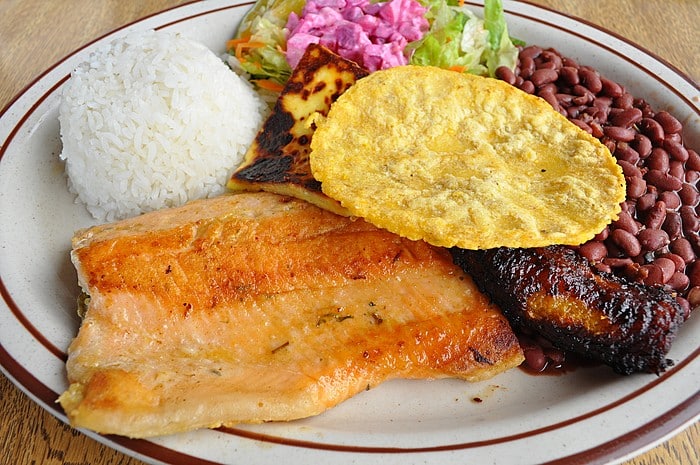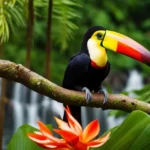Costa Rica is a dream destination for travelers seeking an enriching blend of cultural exploration and eco-tourism. Often celebrated for its breathtaking landscapes and rich biodiversity, this Central American gem also boasts a warm and vibrant culture that invites visitors to connect with its history, people, and traditions. If you’re a travel enthusiast, eco-tourist, or someone passionate about immersing yourself in authentic cultural experiences, Costa Rica promises a trip you’ll never forget.
This blog will guide you through the fascinating cultural experiences Costa Rica has to offer. From lively festivals and traditional cuisine to eco-friendly practices and must-visit landmarks, this is your ultimate guide to exploring Costa Rican culture.
A Tapestry of Traditions: An Overview of Costa Rican Culture
Costa Rica’s culture is a vibrant mix of influences, blending indigenous Chorotega, Bribri, and Boruca heritage with strong Spanish colonial roots. Known for their warm hospitality, “ticos” (the affectionate term for Costa Ricans) place great value on family, community, and living a stress-free life—a concept they call “pura vida,” or “pure life.” This cherished philosophy permeates every aspect of Costa Rican culture, making it an essential part of any travel experience there.
Costa Rican culture thrives in its art, music, and dance. Traditional “marimba” music fills the air in town squares, while folkloric dances like the vibrant “Tope Nacional” tell stories of the nation’s history. Whether through art galleries, handmade crafts, or bustling local markets, creativity in Costa Rica is alive and thriving.
Celebrate Life the Tico Way: Key Festivals and Events
A true testament to Costa Rica’s rich culture is its festivals. These celebrations reflect the country’s love for family, food, and heritage. Here are some must-see events during your visit:
1. Fiesta de los Diablitos (The Festival of Little Devils)
Held annually in January by the Boruca indigenous community, this colorful festival reenacts the Boruca people’s resistance to colonization. Expect traditional masks, lively parades, and traditional dances that embody the resilience of indigenous culture.
2. Palmares Festival
This two-week-long celebration in January is one of Costa Rica’s largest and most anticipated events. Highlights include live concerts, bullfights (non-lethal “toros a la Tica”), horseback parades, and vibrant carnivals.
3. Día de los Boyeros (Oxherd’s Day)
Taking place in March, this festival honors Costa Rice’s agricultural heritage. Ox-drawn carts, intricately painted by local artisans, parade through the town of San Antonio de Escazú, showcasing Costa Rica’s rural traditions.
4. Independence Day
On September 15th, Costa Ricans come together to celebrate their independence from Spain. Streets are filled with parades, traditional dances, and children carrying faroles (lanterns), a symbolic act honoring their history.
These festivals provide an immersive experience into the country’s traditions, connecting visitors with Costa Rica’s joyful spirit.
Sustainability Meets Travel: Eco-Friendly Tourism Practices
Costa Rica is a global leader in sustainable tourism, making it a haven for eco-tourists. The nation has committed to protecting its incredible biodiversity, with over 25% of its land designated as protected areas or national parks. Travelers are encouraged to participate in eco-friendly practices and support businesses that prioritize sustainability.
Eco-Conscious Experiences to Try
- Stay in eco-lodges that use renewable energy and minimize environmental impact.
- Participate in reforestation projects or volunteer programs with local conservation groups.
- Visit sustainable coffee farms to learn about organic coffee production while sampling some of the finest brews in the world.
This harmonious balance between environmental protection and tourism ensures that your visit positively contributes to the country’s ecological health.
Immersing Yourself in Local Customs, Traditions, and Cuisine
To truly experience Costa Rica’s culture, engage with the customs and traditions that make it unique. Start by greeting locals with a friendly “¡Pura vida!”—you’ll instantly feel like part of the community.
Culinary Highlights
Costa Rican cuisine is a flavorful and wholesome celebration of fresh local ingredients. Be sure to try:
- Gallo Pinto: A beloved breakfast dish made of rice and beans, served with eggs and plantains.
- Casado: A hearty meal including rice, beans, meat or fish, and salad—a staple of Costa Rican households.
- Chorreadas: Sweet corn pancakes typically enjoyed with sour cream.
- Ceviche: Fresh fish marinated in lime juice, mixed with onions, cilantro, and peppers.
Pair these dishes with locally sourced coffee or the refreshing agua dulce for a true taste of Costa Rican life.
Traditional Handicrafts
Explore local markets for beautiful handmade items, including:
- Oxcart Souvenirs: Small, hand-painted replicas of the iconic Costa Rican oxcarts.
- Pottery: Traditional ceramics crafted by indigenous communities.
- Textiles: Colorful woven bags, tablecloths, and hammocks that reflect the country’s artistic heritage.
These treasures are not just souvenirs—they’re a piece of Costa Rica’s soul you can take home.
Don’t-Miss Landmarks for a Cultural Immersion
Your Costa Rican adventure wouldn’t be complete without visiting landmarks that blend the country’s cultural and natural wonders.
San José
Start in the capital city, home to:
- The National Theatre: A stunning architectural masterpiece and hub for cultural performances.
- The Jade Museum: Showcasing pre-Columbian artifacts that reveal the country’s indigenous roots.
Nicoya Peninsula
Known as the “Blue Zone,” this region boasts one of the highest life expectancies in the world. Engage with the locals to learn about their health-centered lifestyle.
Bribri Indigenous Territories
Experience authentic indigenous culture by visiting the Bribri people in the Talamanca region, where you can witness their cacao-making process and hear stories of ancestral traditions.
Puerto Viejo
Dive into the Afro-Caribbean vibe of Costa Rica’s Caribbean coast, enjoying the distinctive food, reggae music, and relaxed atmosphere here.
These landmarks promise both cultural insights and breathtaking surroundings for a well-rounded visit.
Practical Tips for Planning Your Culturally Immersive Trip
To make the most of your Costa Rican experience, consider these tips:
- Time Your Visit: Plan your trip around a cultural festival for a deeper understanding of local traditions.
- Engage with Locals: Take guided tours led by Costa Ricans or participate in homestays to build genuine connections.
- Learn a Few Spanish Phrases: While many Costa Ricans speak English, learning basic Spanish phrases can enhance your interactions.
- Respect Traditions: Be mindful of local customs, such as dressing modestly for religious sites and asking permission before photographing people.
These small considerations will help you form a meaningful connection with Costa Rica’s culture.
Explore Costa Rica’s Culture for Yourself
Costa Rica offers much more than its stunning beaches and lush rainforests—it’s a country bursting with cultural richness and authenticity. From dancing at village festivals to savoring traditional dishes, every moment immerses you deeper into the beating heart of Costa Rican life.
Are you ready to experience the magic of Costa Rica? Whether you’re planning your first trip or returning for a second adventure, make time to explore the customs, traditions, and eco-friendly values that make this country so special. Pack your bags—and your curiosity—for an unforgettable cultural escapade. ¡Pura vida!









